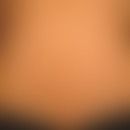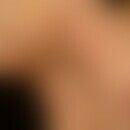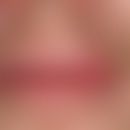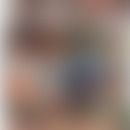Synonym(s)
HistoryThis section has been translated automatically.
DefinitionThis section has been translated automatically.
Autosomal dominantly inherited dysmorphic syndrome with neuro-cardio-facio-cutaneous developmental disorders as well as growth retardation. There are phenotypic analogies to Ullrich-Turner syndrome, but not its chromosomal abnormalities (neither in number nor in structure). Noonan syndrome, together with type VIII neurofibromatosis, CFC and Costello syndrome, is genotypically classified as a RASopathy and has mutations in genes directly involved in the cell proliferation cascade (SOS1, BRAF, KRAS, RAF1) on the one hand and mutations in the PTPN11 gene, which is involved in the control of complex growth processes (see also LEOPARD syndrome) on the other.
You might also be interested in
Occurrence/EpidemiologyThis section has been translated automatically.
EtiopathogenesisThis section has been translated automatically.
In 40-50% of affected individuals, sporadic autosomal-dominant inherited, mostly activating mutations in genes of the RAS-MAP kinase signaling pathway, especially in the PTPN11 gene = protein tyrosine phosphatase nonreceptor-type 11 gene (in 50% of cases). The PTPN 11 gene encodes the SHP-2 protein (receptor phosphotyrosine phosphorylase), which has an important regulatory function in growth factor signaling. Mutations in the PTPN 11 gene are also found in a high percentage in LEOPARD syndrome.
In recent years, autosomal dominant inherited mutations in several other genes of the RAS/MAPK pathway have been identified as the cause of Noonan syndrome. The following genes are affected:
There are other genes which may be the cause of Noonan syndrome, such as the LZTR1 gene, which can be inherited in an autosomal dominant or autosomal recessive manner.
There is a certain genotype-phenotype relationship. For example, children with a mutation in the PTPN-11 gene are smaller than those with a mutation in the SOS-1 gene, who are usually normal-sized. Children with mutations in the RIT-1 gene suffer more often from cardiomyopathy.
ManifestationThis section has been translated automatically.
ClinicThis section has been translated automatically.
Small stature, deep hairline in the neck, café-au-lait spots (10% of patients) and occasionally pterygium colli and cutis verticis gyrata.
Other non-constant cutaneous anomalies are:
- photosensitivity (29%)
- diffuse effluvium with alopecia (24%)
- recurrent oral ulcers (22%)
- Dull hair (12%)
- Palmo-plantar hyperlinearity 12%)
- Keratosis pilaris (12%)
- Palmoplantar keratoses (10%)
- Cafe-au lait stains (10%)
- rarefied eyebrows (75)
- lymphangioma circumscriptum
- Hpyertrophic cardiomyopathy (HCM; I42.2)
The most common malformations of internal organs affect the heart, kidneys and skeleton. Abnormalities in the position of teeth are also common. Cryptorchidism or testicular aplasia are also common.
In girls, sexual development is usually regular except for a time lag.
Mental development is delayed in about 20% of children.
TherapyThis section has been translated automatically.
Progression/forecastThis section has been translated automatically.
Note(s)This section has been translated automatically.
Like LEOPARD syndrome , Noonan syndrome belongs to the family of familial lentiginosis syndromes. This family also includes the following syndromes:
LiteratureThis section has been translated automatically.
- Eccles D et al. (2003) Noonan syndrome: diagnostic difficulties. A case report and literature review. J Obstet Gynaecol 23: 666-667
- Grifone N et al (2003) Correlation between PTPN11 gene mutations and congenital heart defects in Noonan and LEOPARD syndromes. J Med Genet 40: 704-708
- Gripp KW et al (2014) Expanding the SHOC2 mutation associated phenotype of Noonan syndrome with loose anagen hair: structural brain anomalies and myelofibrosis. Am J Med Genet A 161A: 2420-1430.
- Kobylinski O (1883) Ueber eine flughautahnliche Ausbreitung am Halse. Arch Anthrop 14: 343-348
- Musante L et al (2003) Spectrum of mutations in PTPN11 and genotype-phenotype correlation in 96 patients with Noonan syndrome and five patients with cardio-facio-cutaneous syndrome. Eur J Hum Genet 11: 551
- Noonan JA, Ehmke DA (1963) Associated noncardiac malformations in children with congenital heart disease. J Pediatr 63: 468-469
- Noonan JA (1999) Noonan syndrome revisited. J Pediatr 135: 667-668
- Okada M et al (2003) Oral findings in Noonan syndrome: report of a case. J Oral Sci 45: 117-121
- Quaio CR et al (2013) Tegumentary manifestations of Noonan and Noonan-related syndromes. Clinics (Sao Paulo) 68:1079-1083
Incoming links (19)
Cardio-Facio-Cutaneous syndrome; Cardiomyopathy hypertrophic; Ebstein anomaly; Jacobsen syndrome; Kras; Lentiginosis; Leopard syndrome; Loose anagen hair syndrome; Lymphatic malformations; MAPK1 gene; ... Show allOutgoing links (19)
Café-au-lait stain; Cardio-Facio-Cutaneous syndrome; Cardiomyopathy; Costello syndrome; Cutis verticis gyrata; Keratosis pilaris; Kras; Leopard syndrome; Lymphangioma circumscriptum; LZTR1 gene; ... Show allDisclaimer
Please ask your physician for a reliable diagnosis. This website is only meant as a reference.




